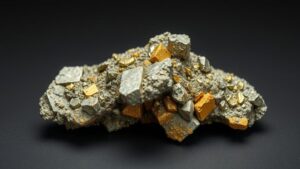How to Identify False Bedrock Traps for Hidden Gold Deposits
How to Identify False Bedrock Traps for Hidden Gold Deposits
Discovering gold deposits often requires a keen understanding of geological formations. Among the various challenges faced by geologists and prospectors is the identification of false bedrock traps, which can mislead individuals into believing they’ve found valuable gold resources. This article delves into how to recognize these false traps, ensuring informed prospecting and more efficient resource exploration.
Understanding Bedrock Traps
Bedrock traps are geological formations where mineral deposits become concentrated due to natural processes. True bedrock traps often host significant mineralization, including gold. But, false bedrock traps can create the illusion of valuable deposits, prompting misdirected prospecting efforts.
- False bedrock traps can occur due to weathered material, sediment accumulation, or geological anomalies.
- This can lead to significant economic losses for prospectors who invest time and resources based on misleading indicators.
Morphological Characteristics of False Bedrock Traps
To accurately identify false bedrock traps, understanding the morphological characteristics is essential. These superficial features can often masquerade as genuine structures capable of retaining valuable minerals.
- Weathered Zone Accumulations: Areas where the bedrock has undergone extensive weathering can form surface deposits that mimic actual mineralization.
- Silt and Clay Residue: Fine particles can accumulate in low-lying areas, leading to mistaken identifications of lodes due to visible mineral aggregates.
Geological Indicators of False Traps
Several geological features can signal the presence of false bedrock traps. Recognizing these indicators can save time and resources when prospecting for gold.
- Drifted Soil Layers: Soil that has been moved by natural forces may cover true bedrock, leading to incomplete assessments.
- Fossilized Organic Materials: The presence of decayed plant matter can lead to significant gold misinterpretation as their mineral content may falsely indicate gold deposits.
Utilizing Technology for Assessment
Modern technology plays a crucial role in the successful identification of geological features. Geophysical methods such as ground-penetrating radar (GPR) and resistivity surveys can provide deeper insights.
- Ground-Penetrating Radar (GPR): GPR can help visualize subsurface features, distinguishing between true and false traps.
- Soil Resistivity Surveys: By measuring electrical resistivity, one can identify anomalies that indicate mineralization versus mere soil accumulation.
Case Studies: Recognizing False Traps
Case studies provide valuable insights into the identification of false bedrock traps. An analysis of specific sites in North America exemplifies these principles.
- Example 1 – Mother Lode Gold Belt: In Californias Mother Lode region, initial prospecting led many to mistakenly identify surface accumulations of quartz as gold-rich bedrock. Subsequent scientific evaluations revealed these were primarily weathered deposits.
- Example 2 – Klondike Gold Rush: During the Klondike Gold Rush, prospectors often fell for surface gold indications that were the result of glacial movements rather than true bedrock deposits, demonstrating the importance of thorough geological investigation.
Actionable Takeaways
Prospecting for gold requires careful analysis and understanding of geological characteristics. To effectively identify false bedrock traps, consider the following steps:
- Conduct thorough geological surveys: Use a combination of field studies and technology to evaluate soil and bedrock characteristics.
- Educate yourself on local geology: Understanding the geological history of a region can inform better prospecting decisions.
- Network with experienced prospectors: Learn from the experiences of others to avoid common pitfalls encountered in gold exploration.
To wrap up, understanding how to identify false bedrock traps plays a vital role in the quest for hidden gold deposits. By leveraging both traditional geological knowledge and modern technology, prospectors can improve their chances of making successful discoveries while minimizing the risks of misleading indicators.


